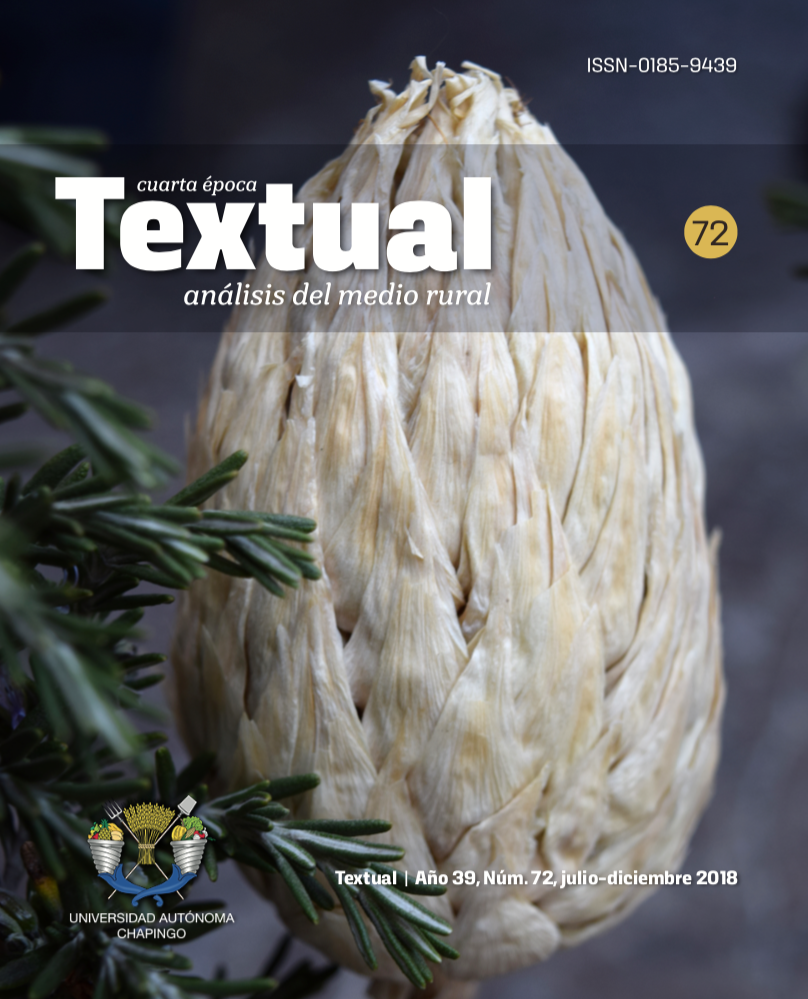Abstract
The state of Campeche is one of the leading producers of bee honey in Mexico. In 2014 a production of seven thousand tons of honey was recorded with a value of more than two hundred twenty-five million pesos, about seventeen million dollars. The aim of this paper is to socially and economically characterize bee honey production in the north of the state of Campeche, Mexico with data about education, land tenure, organization, costs, income, and profitability. The bee honey producers are ejidatarios, older than fifty years of age, and have low levels of education: more than 75 % have not finished junior high school. Furthermore, it was found that beekeeper production costs were more than eighty-two thousand pesos, of which 78% were for variable costs, mainly costs for paying for sugar, apistan (Apistan® Anti-Varroa Strips) and labor; about 22% correspond to fixed costs, basically made up of the depreciation of fixed costs. The average income obtained was higher than one hundred seventy thousand pesos, with a benefit-cost ratio of about two. Therefore, the producers in the north of the state of Campeche are efficient and profitable in producing bee honey.
References
FAOSTAT. (2017). Cultivos y productos de ganad- ería. Base de datos estadísticos de la FAO. En línea, obtenido de http://www.fao.org/faostat/en/#home
Gould, J. P., & Edward P. L. (1994). Teoría mi- croeconómica. México: Fondo de Cultura Económica.
Gupta, R. K. (2014). Taxonomy and Distribution of Different Honeybee Species. En Bee- keeping for Poverty Alleviation and Liveli- hood Security. Vol. 1: Technological Aspects of Beekeeping. Eds. Gupta, R. K., Reybro- eck, W., Van Veen, J. W. Gupta, A. Nether- lands: Springer.
Ibáñez C., & Caro T., J. (2001). Algunas teorías e instrumentos para el análisis de la competi- tividad. San José, Costa Rica: IICA.
Ley Agraria. (1992). Nueva Ley publicada en el Di- ario Oficial de la Federación el 26 de febrero de 1992. Últimas reformas publicadas DOF 27-03-2017. LXIII
Legislatura. H. Congre- so de la Unión-Cámara de Diputados. En línea, obtenido de http://www.diputados.gob.mx/LeyesBiblio/ref/lagra.htm
Mendenhall, W., Beaver, R. J., & Beaver, B. M. (2010). Introducción a la probabilidad y estadística. 13 Ed. México: Cengage Learning Editores S.A. de C.V.
Moritz, A. (1991). Manual del apicultor aficiona- do. México: Ediciones Roca, S. A.
Oficina de Estudios y Políticas Agrarias (ODE- PA). (2014). Miel chilena: consolidación y nuevos mercados. Chile: Gobierno de Chile.
SEMARNATCAM. (2013). Campeche es uno de los principales productores de miel. México: SEMARNAT-Gobierno del estado de Campeche. En línea, obtenido de http://www.semarnatcam.campeche.gob.mx/campeche-es-uno-de-los-principales-productores-de-miel/.
Sistema de Información Agroalimentaria de Consulta (SIACON). (2017). Módulo agrícola del SIACON. México: SIAP-SAGARPA.
United States Department of Agriculture (USDA). (2017). Data & Analysis. Foreign Agricultural Service. En línea, obtenido de
Villanueva G., R., & Colli U., W. (1996). La apicul- tura en la península de Yucatán, México y sus perspectivas. México: Apitec.

This work is licensed under a Creative Commons Attribution-NonCommercial 4.0 International License.
Copyright (c) 2018 José Reymundo Chan Chi, Ignacio Caamal Cauich, Verna Gricel Pat Fernández, David Martínez Luis, Alberto Pérez Fernández




